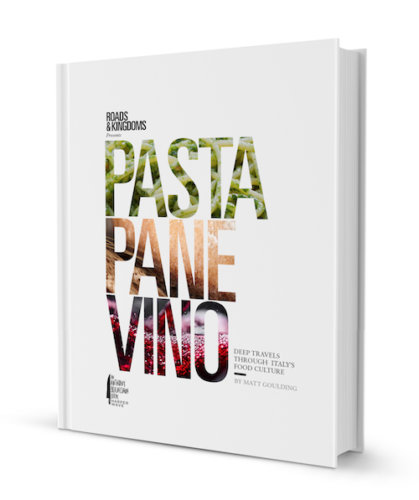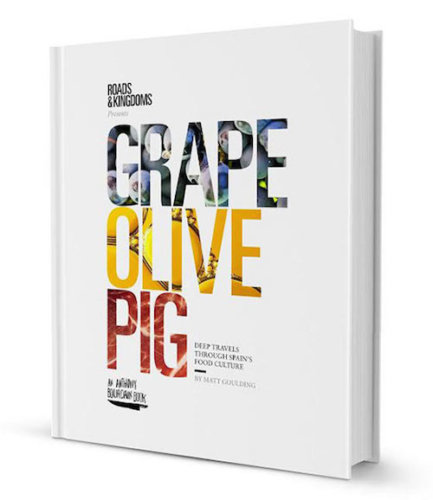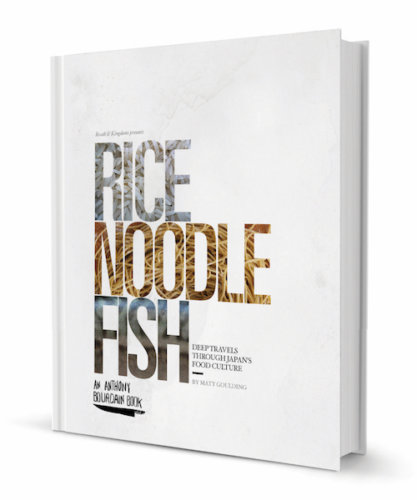Matt Goulding doesn’t do things by halves, and his recent James Beard award for Dining and Travel writing — specifically for his piece dubbed “Slice of Tokyo: How Japan Became a Pizza Hotspot”, for Airbnb Magazine — attests to this.
Matt Goulding: putting words to food
Matt Goulding doesn’t do things by halves, and his recent James Beard award for Dining and Travel writing—specifically for his piece dubbed “Slice of Tokyo: How Japan Became a Pizza Hotspot”, for Airbnb Magazine—attests to this. Before writing about pizza, he learned how to make it, by becoming a certified pizzaolo at what he describes as the somewhat official school of pizza in Naples, the APN (Associazione Pizzaiuoli Napoletani). The winning article is about the two things dear to Goulding’s heart – Japan and pizza. But it’s about something else too: shokunin, the ultimate artisan, devoted to mastery of a specific process. The following conversation—which touches on everything from the Italian Nonna to Spanish seafood—is also an exploration of shokunin, and how mastery, Japan and pizza fit together.
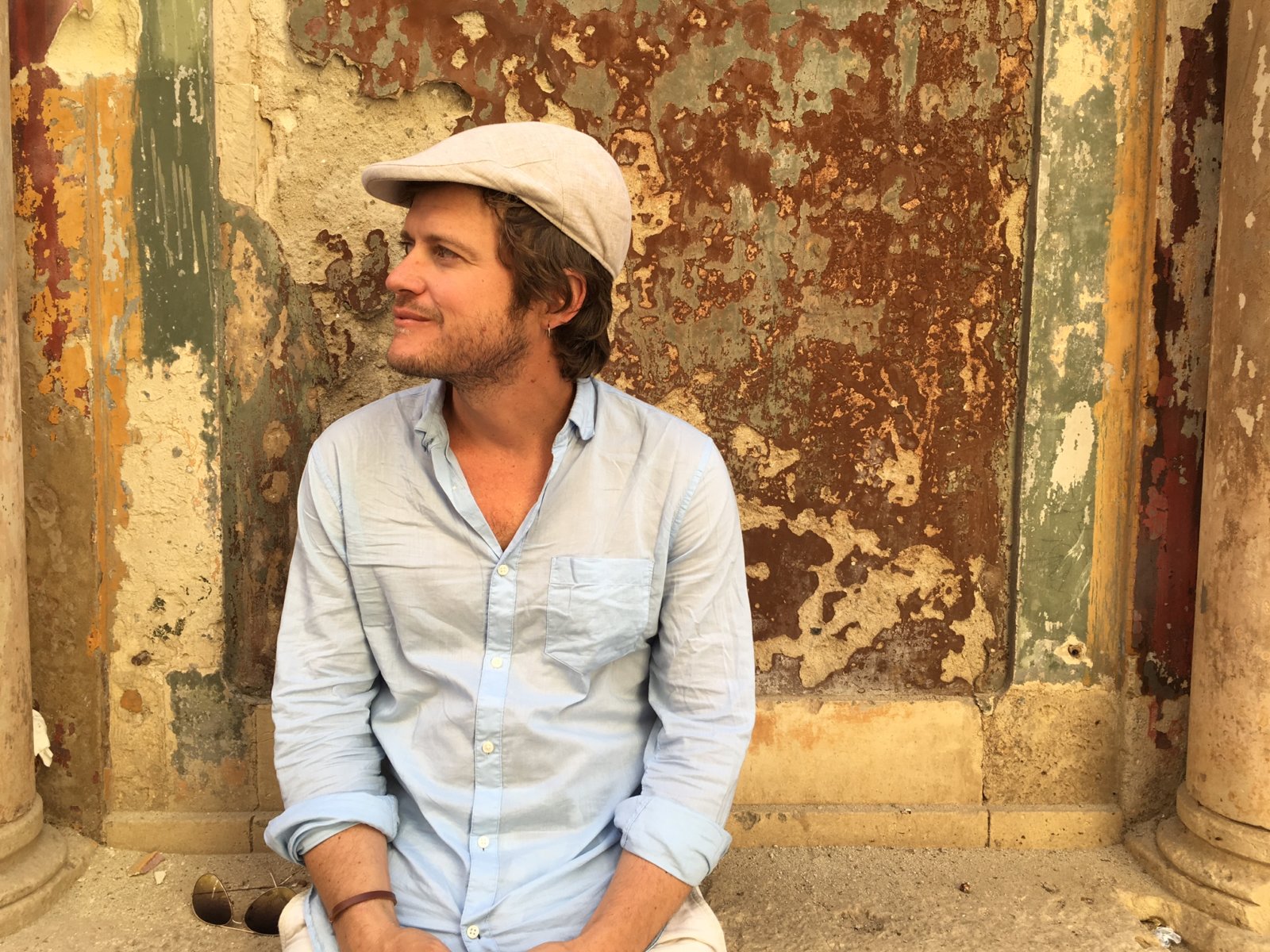
Matt Goulding, a food researcher, explorer and writer is an Emmy- and James Beard Award-winning writer and New York Times best-selling author of more than 20 books, including Pasta, Pane, Vino, part of a foodie-travel series he published with Anthony Bourdain.
Congratulations for your James Beard award, so does pizza really taste better in Japan than in Italy?
Thank you very much. It’s a bit surreal getting a Beard award this year, especially because you normally get tuxedoed and you go to this big event in the US for food media and for chefs, and this year I received the award in my pajamas at home. On top of that, it’s the category of dining and travel. As you know, as someone who does both of those things it feels like a lifetime ago. So from that perspective it’s unexpected but a really nice surprise.
Does it taste better than in Italy is kind of an impossible question. I’ve already made a lot of enemies in Italy because even the suggestion that it might taste as good… here’s the thing: obviously Italy is the historic home of pizza and it has a deep connection to pizza as a culture, as an expression of a Southern Italian lifestyle, and the quality and the depth of pizza across Italy is incomparable. You can’t find a better place to have it. But the thing about Japan is that this mentality of the shokunin – the idea of a craftsperson or an artisan who dedicates his or her life to one concept, one idea, one avenue of work. This means that when you take that level of focus and attention to detail and turn it to anything you’re going to become really good at it, especially over time, over decades and over generations. You get very very good because you have this specialised knowledge and understanding. Whether it’s ceramics of woodwork or sword making, the classic historical areas of shokunin and focus. In a more modern context that means food from outside of Japan, French baking, the Japanese make extraordinary pastries and baguettes. They do credible versions of Chinese food. They also do exceptional Italian food. Not just generalised Italian food but really specialised Italian food. There are 6,000 Italian restaurants in Tokyo, that says it all.
When you take that level of focus and attention to detail and turn it to anything you’re going to become really good at it, especially over time, over decades and over generations. You get very very good because you have this specialised knowledge and understanding.
What happened with pizza is that it’s a relatively new thing in terms of Japan. If you take the best pizza places in Japan they’re as good as any across the world. That’s a reflection of the ethos of the Japanese regarding everything they do in the kitchen.
How does that pizza taste?
It’s a funny thing, you’re always in Japan wondering if you should be eating pizza. It’s extraordinary. The two places I really focus on in the article make really exceptional pizza. Seirinkan is probably the best example of that shokunin mentality. We’re talking about a place where they really only serve two types of pizzas, the marinara and the margarita. The marinara being the original pizza and the margarita being the most widely available pizza in the world. That’s really all he does every single day. He never closes, operates 365 days a year and makes lunch and dinner himself. Never has a pizza been served at Seirinkan that hasn’t been made by him. I’d be very surprised that another pizzeria in the world can say the same thing.
How many pizzas do they serve?
I’m trying to remember. Probably hundreds. Not a tonne, but everything comes out exactly as he wants it. Pizza is one of these endlessly complex disciplines: water temperature, humidity, the moisture level of the mozzarella you use. All of these are variables that change from minute to minute so no two pizzas are ever the same, even under the hands of an incredible craftsperson. He takes his job so seriously and wouldn’t let other people make his pizzas, which says a lot about the mentality in Japan. When you compare that to the approach you would find in Naples for example. The very famous pizza masters in and around Naples who are deeply skilled: Franco Pepe, Enzo Coccio, Gino Sorbillo.
The truth is they don’t make most of the pizzas that come out of their ovens that have their names on them. That’s mostly a Western model, right? In the same way that chef’s don’t make their own food anymore. They oversee things, they’re leaders, they are spokespeople, they’re managers, but they’re not actually at the end of the day doing the cooking. That, as you know, is unthinkable in Japan. If your name is on the door every piece of food should be made by your hands. And if it’s not there is almost a level of shame that comes with that. So this is an important thing to think about when we talk about the idea of shokunin. It really does infiltrate all areas of Japanese society. Sometimes I’ll be joking with my wife when we’re travelling and we walk into our hotel room and every single thing is perfectly made, the sheets are crisp, there is a sweet little detail here and there, and I’m like look, the hotel cleaning woman is a shokunin. It’s a joke but it’s a shorthand way of saying that level of dedication is a societal expectation. It’s not just a few people who do it here and there. There’s this quote from a Japanese sculptor, Toshio Odate, I’m just going to read it out to you because I think it’s really instructive about how this mentality really drives Japanese culture.
If your name is on the door every piece of food should be made by your hands. And if it’s not there is almost a level of shame that comes with that. So this is an important thing to think about when we talk about the idea of shokunin.
He says “The shokunin has a social obligation to work his or her best for the general welfare of the people, this obligation is both spiritual and material, in that no matter what it is, the shokunin’s responsibility is to fulfill the requirement.”
You owe it to your neighbour to give you all to what you do. To dedicate yourself 100% to the task or the profession that you chose.
For us here in the West it’s unimaginable because we all think about ourselves and our individual needs. It’s difficult to grasp this concept, don’t you think?
Yes, I’m very much Western in my mentality. I try to do a lot of different things at a lot of different times. What I find so fascinating is that it is so foreign to me and as much as I respect and admire it, it’s specifically because I can’t do it myself.
Here in the West, the way that chefs go about building a food world is getting to 90%. There’s a thing about “I can get from 0-90, if I’m talented and I’m focused and I work really hard for a couple of years I can get to 90 percentile in making pizza, in making burgers, in doing these things. Then once I get to 90 I’m going to leave it, and I’m going to do something else. I’m going to open a sandwich shop, I’m going to go try my hand at Izakaya because I’ve always loved Japanese food and that’s how you always get chefs who have 10 or 15 different restaurant concepts in a different city. I understand that, especially from a business standpoint. But the Japanese aren’t interested in that business element. What they’re interested in is the lifelong quest to get from 90 to 94 or 95 or 96. To get to 90 might take a few years but to get from 90 to 95 takes you a lifetime. You’ll never get to 100, that’s the whole point.
When did you first realise that a shokunin was such a special thing, something you’ve never encountered before?
I had a very specific transformative experience. It was in 2013, and I was with my wife in Japan on our honeymoon. A friend of mine Shinji Nohara who is very well-known for being a fixer for big chefs and for being one of the most knowledgeable eaters in the city, we had connected and the first thing that he did was take us to a little coffee place called Daibo Coffee, it was right on the edge of Omotesando in Aoyama. And it was that typical place where you enter a small little building and you’re walking up a narrow stairway and it’s just a long dark wooden bar, and you kind of think oh ok. We sat down at the bar and ordered three cups of coffee from different regions and I could see right away that it’s like 800 yen for a cup, which is expensive. How can you buy a 8 euro cup of coffee? So my friend goes into the back and you can hear some rustling, and I’m like “what is that noise”, and what it was, was him going over the beans with his fingers, picking out any imperfect bean. Any bean that was too small or too large, or roast in an inconsistent way. So even though this had probably already been done as it was shipped on the way from Columbia to Japan, he always starts every cup by doing this one last time. He takes the beans and puts them in these tiny, almost individual roasters, over a sharpened flame and he roasts the coffee by hand. At the moment, a la minute basically and then he grinds it by hand. Then he slowly drips this coffee with a level of patience and dedication that I had never seen before. It took 45 minutes to get this cup of coffee but it was a religious experience. I don’t use that term lightly, it was actually very spiritual and transformative. It touched me deeply in a way that I had never been touched by, certainly coffee, but arguably by anything in the food world before. Of course the coffee was incredible but the experience around that was really what opened my eyes. Talking to Shinji, I think he referenced that world Shokunin, and I realised that there is shokunin everywhere. I hadn’t been able to put my finger on what made Japanese food so amazing. Then that experience came in and everything clicked. You realise very quickly that Japan is a country of Shokunin. It’s not just one shokunin, not just Jiro san doing his sushi – the most famous shokunin in the world, but there’s actually 500 or 100 or 200 sushi shokunin in Tokyo alone where everyone is as good as Jiro, if not better.
You realise very quickly that Japan is a country of Shokunin. It’s not just one shokunin, not just Jiro san doing his sushi – the most famous shokunin in the world, but there’s actually 500 or 100 or 200 sushi shokunin in Tokyo alone where everyone is as good as Jiro, if not better.
That’s a passage of your book I remember, I could quote it in the middle of the night. That Japan is a land of shokunin where everyone is doing the craft of what they do so well. Reading your book was an amazing experience because it put everything into place. I’ve been going to Japan for a long time now but only after reading your book I realised that yes, it’s this mentality that makes things differently.
I think it is a mentality, you make a decision, or it’s made for you, that you’re going to dedicate yourself to this one pursuit. Not every individual does that but it’s carried on in a way through different people. The ones who are known internationally are the ones who took it to the farthest extreme. The tempura at that one extraordinary place, every food has its shokunin. The best thing we can do when we go there is go to find that shokunin and hopefully get a chance to experience that knowledge in their lifetime.
Who else would you name as shokunin that are comparable in the US or elsewhere?
Thoughtfulness and attention is put into everything. When you do something you know exactly why. There is intentionality in everything you do. That’s a lesson I learned in Japan which I try to bring into my own life.
Magnus Nillson of Fäviken, which he has moved on from now. His mentality and level of attention to detail, the seasonal importance. He is 1000% a shokunin. I spent a week at Fäviken in 2013 and it was remarkable to see a chef living in the Western world paying attention to every little piece of food that goes into the meal. It’s not just about the deliciousness of the meal it’s about doing things right. There’s a right way and a wrong way. If you want to understand who Magnus is, read a section from his first book about carrots, it’s a 1000 word essay on peeling a carrot. He tells this story of coming up to an apprentice who was peeling a carrot, he talks about how sad and angry it made him to see someone using his beautiful carrot that way, thoughtlessly. Then he walks you through the perfect way to peel a carrot. What I love about Magnus and about the Japanese in general is that thoughtfulness and attention that is put into everything. When you do something you know exactly why. There is intentionality in everything you do. That’s a lesson I learned in Japan which I try to bring into my own life.
You have written three wonderful books about, Japan, Spain and about Italy. Which one was the most exciting to work on?
Japan, because it was all so new to me. Usually the point is to use that personal story to give context to that culture. For Japan I was coming at it as a total novice, and I knew nothing about Japanese cuisine, but I wanted to tell you what I learned along the way. For Spain I’m at once an insider and an outsider, I have one foot inside the country and one foot out of it. This gives a perspective that can be meaningful or valuable because you have the chance to dive deep into the culture. But it also gives you some perspective that helps you recognise things that those who were born in the country might not, because they’re so used to it. Spain, for me, is about balancing that insider/outsider element and using that status to travel around the country and tell the story about the beauty of regional Spanish cuisine, which as you know, is extraordinary. We often think about Spanish cuisine as this high-end style cuisine. Of course they established themselves as this very modern food culture. But what’s talked about a lot less is that the Spanish have a reverence for ingredients, and for product. As chef’s would say: Product, product, product. It’s almost as intense as the Japanese. The love of extraordinary seafood. Whether it’s the red shrimp of the Catalan coastline, of the amazing clams and barnacles of the Galician coast, the really tremendous flat fish of Northern Spain.
The level of focus and dedication that the Spanish have on products is really really unique in the world and should be celebrated. It’s really fun to go to Disfrutar in Barcelona and let Oriol (Castro) and the crew blow your mind with incredible cooking and very fun conceptual cooking. That’s great and you do that once a year, the other 364 days you can be eating beautiful seafood à la plancha, delicious rice and the greatest charcuterie, especially the greatest hamon that mankind has ever come up with.
And it’s so simple
Yes it is, most of the time Spanish cuisine is just olive oil, salt, and product. Everything else is just superfluous, it’s almost not necessary as long as the product itself is what the Spanish usually demand.
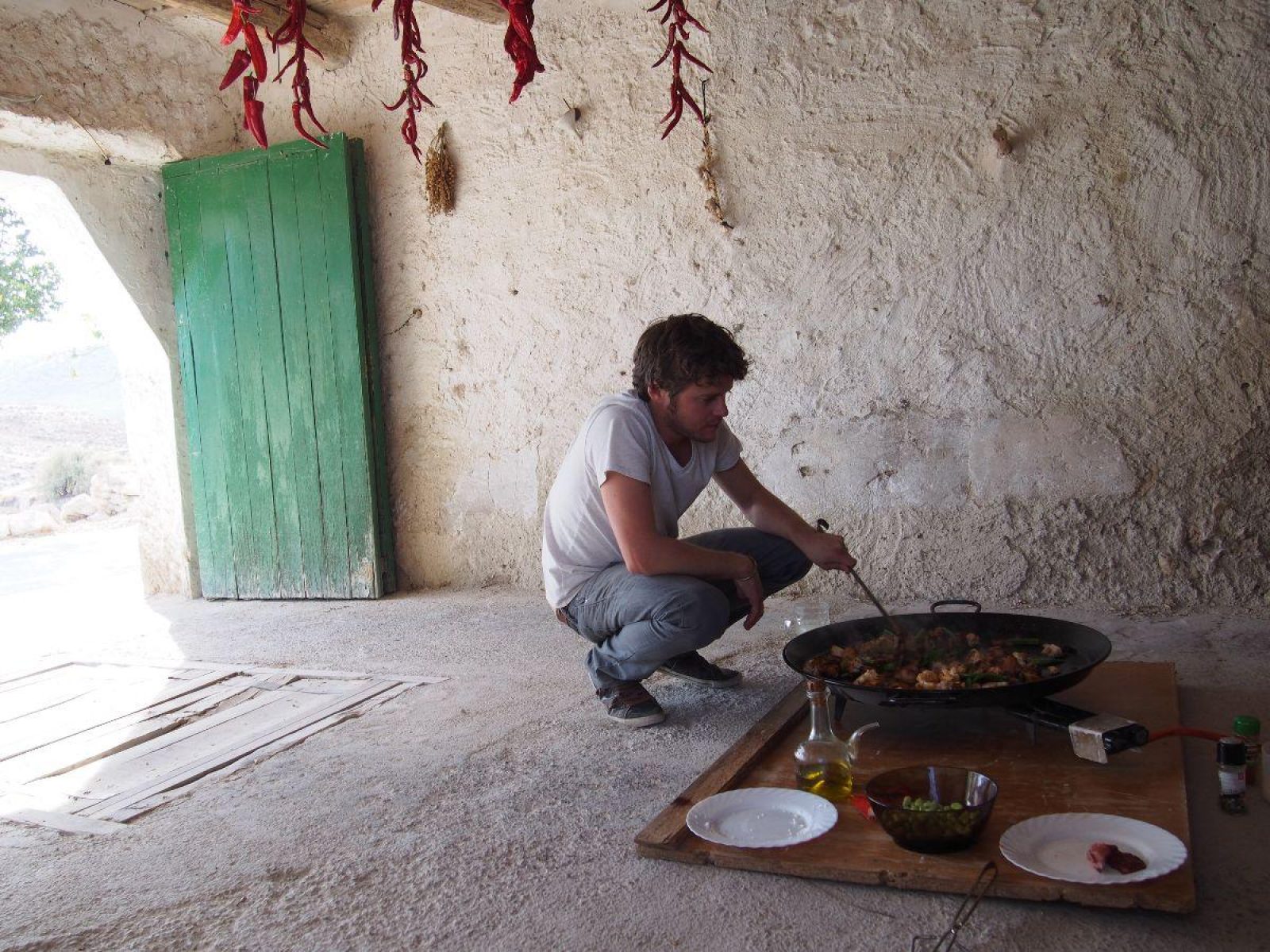
Most of the time Spanish cuisine is just olive oil, salt, and product. Everything else is just superfluous, it’s almost not necessary as long as the product itself is what the Spanish usually demand
And tell me a few words about Italy.
The backstory behind Italy is that when I left New York in 2010 I was really burnt out and I was going to go to Italy because I wanted to learn more about Italian food and meet Italian women. But I stopped over in Barcelona and I met my wife Laura and I never quite made it. But that connection to the country was very much there, I travelled there a lot and I spent a lot of time eating there. I want to talk about the importance of regionality, the way food changes from one region to another. Italian cuisine is the best expression of that idea, of fierce regional culture.
Italy is a very young country and it’s a very different country up North to down South, and the cuisine changes a lot, and those changes are a source of pride and a source of heritage that the locals take very seriously. I want to be able to tell those stories. The challenge of course is that the story of Italian food is probably the most written food story in the world. So on the one hand I didn’t want to go in there and tell the same story everyone has been writing. On the other hand so much has been written that you have to challenge yourself to find new stories. The real story there that I found spending a year on and off travelling and eating there, is that people look at Italian food, particularly Italians I think, as something that doesn’t change because nonna made it best and we shouldn’t mess with what nonna does, a carbonara has to be like this and a pizza margarita has to be like this, and nonna does it best and any other way is not just wrong it’s sacrilege. But food is culture and it evolves no matter what. So I wanted to tell the story of that evolution. Of cooks and of chefs who are finding ways to advance the cuisine from pizza and in and around campagna to the trattoria’s of Rome to the cuisine in Northern Italy. That wherever you went there’s this incredible expression of evolution.
But food is culture and it evolves no matter what.
Of course we have the Nonna, how important is the Nonna in Italy?
She is the center of all food culture in Italy of course. Almost all Italian’s food culture starts with the nonna and the way that she cooks. There’s two practices of food in Italy no matter where you go: the food the nonna makes and there’s everything else. It’s absolutely fundamental. You don’t ever want to pick a fight with an Italian about any food.
Almost all Italian’s food culture starts with the nonna and the way that she cooks. There’s two practices of food in Italy no matter where you go: the food the nonna makes and there’s everything else.
Any food writers that I know will tell you that the most trouble they’ve ever gotten into has been somehow related to Italian food. On one hand it’s a little bit ridiculous but on the other hand it’s part of a culture I love. I want to be a part of that culture that feels so strongly about the old women that generate that food culture. As I say, don’t mess with nonna.
You collaborated with Antony Bourdain for many years. We all admire him, since he passed away I don’t think there is anyone who could replace him ever. What lessons have you learned from him?
First and foremost what I learned just watching him and being a fan of his before we worked together, was the importance of travel as a way of generating empathy. Tony travelled the world to be a more empathetic human. That’s what he learned along the way. That’s the message he spread implicitly and sometimes explicitly in the work that he did. We travel for our own reasons to see art, to eat food, or to have an adventure, all those are true. But if you’re someone who travels consistently throughout your life, whether we travel across town or across the country or across the world, we do that to try to understand someone different from you. That’s what makes us better humans. It makes us better as a society of humans and that level of empathy is certainly one of the most important things that individually and collectively we can aspire to have. Tony taught me that very early on.
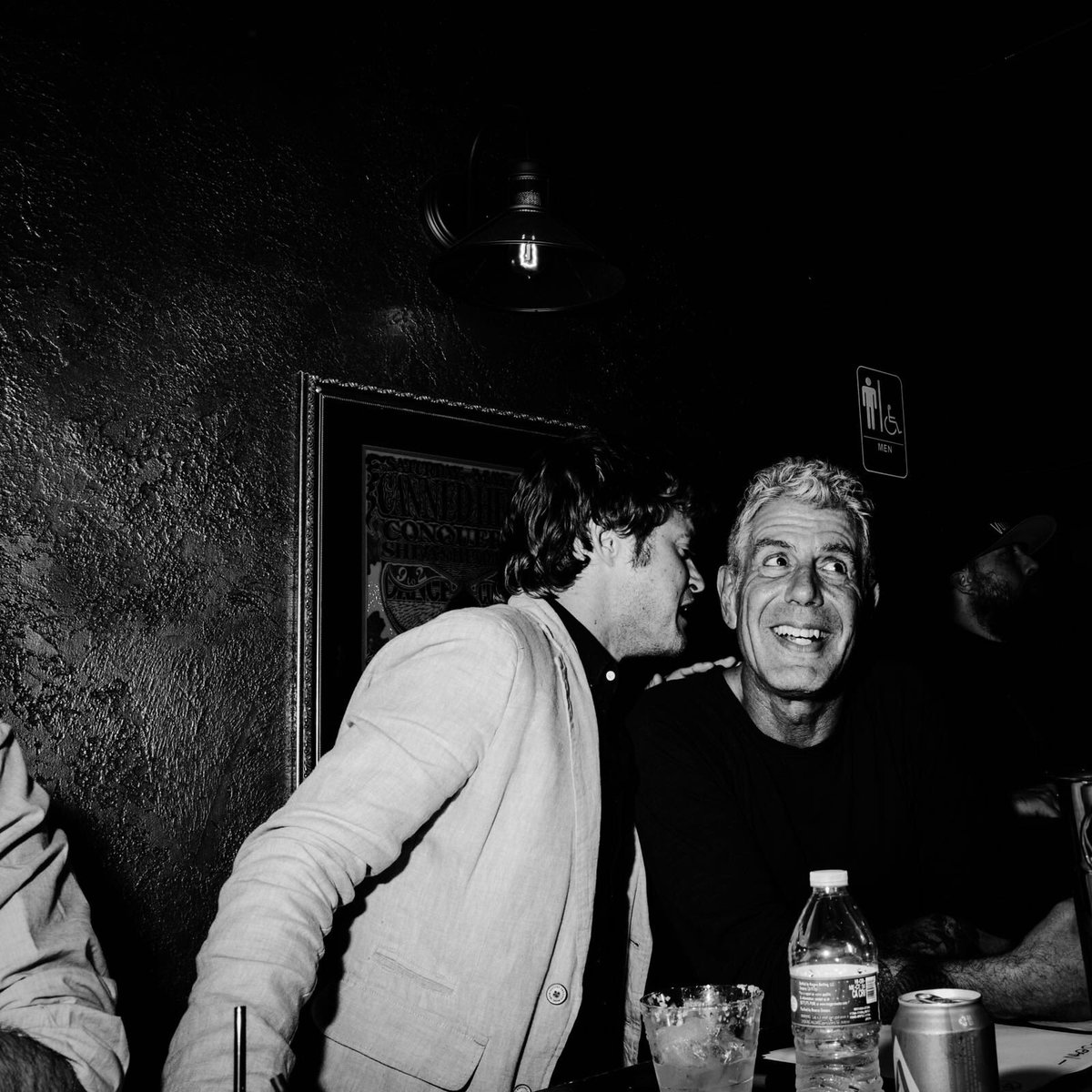
As we got a chance to work together, which of course for me was the dream of a lifetime, I was his biggest fan growing up and to find out that he was a fan of the company I run Roads and Kingdoms and wanted to work together was the most shocking and wonderful things that happened to me in my career. He became an investor in our business, and I expected with that investment that he would ask what’s the plan here, what we were doing editorially to grow traffic, to bring in more advertising. But he never asked that, not once. He didn’t ever ask us about our business. His feedback was always that he wanted something more subversive, more out there. His feedback was always the exact opposite of what you would expect from someone who had a business point of view for example. He wanted to go deeper, to tell the story exactly how we wanted to tell it. That was a piece of advice he gave me consistently throughout the time we were working together. When you’re writing, don’t think about who you’re writing for, just write the story as it needs to be written. Tell the story as it needs to be told and you’ll find an audience. That was an extraordinary lesson and I have to say, Anthony Bourdain became the biggest voice in the food world by doing exactly that. Not everybody can do that, not everybody has his talent or his extraordinary ability with words or his connection to humans but either way there’s something to really respect about that lesson. Try to quiet out all that outside noise and just focus on doing honor to the subject you’re writing about. The people and the places you write about deserve that much. The people we write about shouldn’t be reduced to headlines or a list of bullet points in a listicle. We try to do honor to their stories by telling it as close to genuine as possible, and that usually means letting people tell their own stories as much as possible. But the things I learned from Bourdain could fill many, many books. Anyone who respected and watched Tony with their eyes and ears open could say the same things, because he was very open on camera and in his writing about the way he saw the world. He was exactly that guy, he wasn’t someone different when the camera was away. He was actually a very genuine, somewhat shy guy who had a very deep connection to the world.
When you’re writing, don’t think about who you’re writing for, just write the story as it needs to be written. Tell the story as it needs to be told and you’ll find an audience. That was an extraordinary lesson and I have to say, Anthony Bourdain became the biggest voice in the food world by doing exactly that.
What’s next for you?
Unfortunately I can’t quite say what’s next for me. That will come out at some point. Obviously this special moment in history has turned everyone’s plans upside down, everything we thought we’d do in 2020 has to be reconsidered. I’ve been out in rural North Carolina for the last three months. I haven’t seen anybody and I’ve just watched spring kind of grow outside my window. I’ve been enjoying the moment to slow down and observe. Being here during this moment has given me some real perspective on how I want to spend my time as a writer going forward. The amazing thing about being a writer and why I like to do it is because you get to choose what you write about. You can dedicate yourself to becoming an expert on whatever subject you want to write about. I spent the last 15 years writing very specifically about restaurants about food culture, about the details of dishes, I’ve written cookbooks and I’ve done a lot of that. But what’s next is the really big question. I think being a little bit more focused on positive change. On some of the big things that need to get done at this period of human history. Obviously, what we’ve gone through with the pandemic is just a dress rehearsal for climate change and for the bigger challenge that humans have. Those stories, whether it’s climate change or public health, or immigration. Those are all food stories. That’s what I want to do, focus more on that. It’s about using food to tell the story of the changes that we as humans are going to need to make if we’re going to stick around on this planet.
Thank you.
